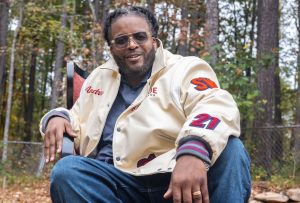When I look back on the 10 or so years that I worked at Peachtree Medical Center, I see the history of medical services in my new hometown. Occasionally another member joined the staff, but for at least its first decade, Dr. Henry Drake’s staff consisted of Bonnie, Juanita, Mary Ann and me.
Patients regarded Bonnie and Juanita as nurses, Mary Ann as receptionist, billing and file clerk. I was whatever they needed.
The practice started out slowly, of course, and I wanted a part-time job that got me home in time to meet my girls after school. I think I was expected to file insurance claims and call patients with lab results, but soon I was “in the back” as well. My time at the clinic coincided perfectly with the developing years of the city’s Emergency Medical Services, so I was learning, learning, learning. In EMT school in Riverdale, I learned how to start an IV, how to assess a patient’s condition, how to apply splints, how to use a defibrillator for diagnosis and for electrical conversion. We administered cardiac drugs and we learned how to triage multi-injury scenes.
I got very good at medical diagnoses in the medical center and was able to pass some of that on to the EMTs. Pain scares EMTs, and when a patient (usually male) is writhing in lower back pain, the medics want to put the pedal to the metal to get him to the hospital. I made sympathetic noises and assured my colleagues the guy was passing a good-sized kidney stone, yes, was in a lot of pain but not in danger, and could be carried to the hospital without lights and siren or, for that matter, his wife could drive him.
We even administered pain medicine on Dr. Drake’s protocol. We were legally working under his license and could do a lot more than most units in the state because we knew the doc “had our back,” as the saying goes.
Didn’t mean to stray from my subjects, the staff at the medical center. Mary Ann was at the front desk, answering the phone, filing insurance claims, etc., etc., etc. When I wasn’t busy, she taught me how and I was able to help. You are remembering, aren’t you, that we were still in the dark ages? The most sophisticated piece of equipment in the office was a copy machine. I don’t think we had a fax machine, but I honestly don’t remember. And we nagged the boss for years to get us at least one of those nifty new touchtone phones. Just the thought of those old rotary phones makes me wince.
Bonnie and Juanita had worked for the doctor in another clinic in Newnan and then in Macon, and brought tons of experience to the one in Peachtree City. Bonnie’s area of expertise was administering allergy shots, and ’Nita usually (as I recall) took X-rays.
Actually, except for Mary Ann, we all did at least some of every job in the clinic.
We ate lunch together most days and became friends. One (rare) slow day ’Nita got to talking about life in Newnan, Ga., in the days of segregation, and I started taking notes. You wouldn’t believe how often that piece of paper has surfaced and I’ve set it aside for the “right time.” Who knows whether this is the right time? I’ve just gotten tired of refiling it.
Let me see if I can describe how it was back then. By the time we got to Georgia, in 1971, Newnan had two hospitals. The old brick hospital in the city of Newnan was unofficially called “the White hospital” and the brand-new facility on Hospital Road, west of the city, “the Colored hospital.” By not offering services to Medicaid patients, the old hospital could control what patients it would take.
At least that’s how ’Nita explained it. “That’s just how it was,” she shrugged.
We wore polyester scrubs in bright colors and when ’Nita wore the yellow ones, someone said she looked like a black-eyed Susan. She loved it.
When I picture Juanita I see her as a tiny thing, folding her hands and murmuring grace over her lunch. Then, between bites of a sandwich, she told her story. Things are better now, she said. Blacks have returned here to live, to raise their families, and retire.
In my notes I mention Delilah who had no title, no schooling – but became the most in-demand scrub nurse at the white hospital. Starting at $5 a day.
Juanita had no formal training after high school graduation either – she got a maid’s pay at the white hospital, and indeed was a maid. Starting at $5 a week.
If my notes are to be trusted after all these years, she was considered a nurse’s aide at the colored hospital. Look at what she was doing:
She did OB prep and worked in the nursery. She worked in surgery, in the laundry, developed films in X-Ray, took vital signs. She mentions walking to work at either hospital, a pretty good hike to bracket a 12-hour workday.
The black “nurses” ate lunch after the white staff, only they sat behind the stove.
“Doing nurses’ work but not getting no pay for it,” she mused. “That’s just the way it was.”
She married at 22; her husband died in 1955. They had four children – or “chirren,” as she put it.
“Urban renewal took our property,” she said. “We built our house in 1968 and burned the mortgage in 1981.”
There’s so much more to Juanita’s story but not too many left to add the details. Bonnie and ’Nita are gone, and Dr. Drake died in 1998.
Mary Ann became a full-time wife and mother, and I went to work for a couple of other doctors and a Fayetteville dentist.
“That’s just the way it was,” Juanita would say.












Leave a Comment
You must be logged in to post a comment.